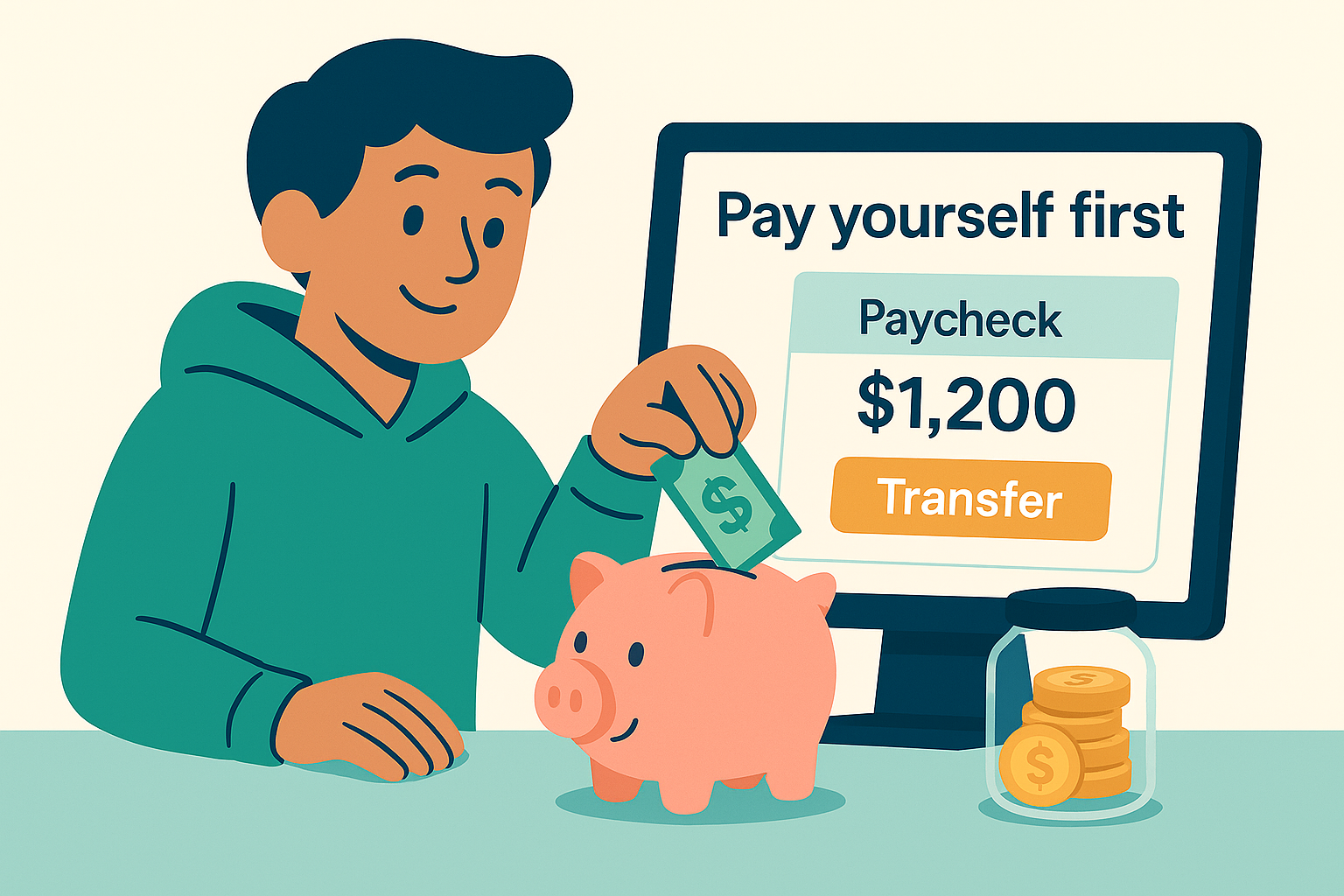Pay Yourself First: The Rule That Changes Everything
Pay Yourself First: The Rule That Changes Everything

It’s payday again. The moment your direct deposit lands, you feel a little lighter.
But within hours, maybe even minutes, the balance starts to shrink. Rent. Groceries. Streaming services. That one delivery that was supposed to be “just this once.”
By the end of the week, you’re wondering where it all went.
I used to think I simply wasn’t earning enough to save. But that wasn’t true.
What I really lacked was priority. And that’s what “Pay Yourself First” fixes.
The Psychology Behind It
Most people treat saving as whatever’s left over after spending. But human behavior doesn’t work that way.
When money sits in your account, it’s a psychological magnet for expenses. Every purchase feels justifiable because the money is “there.”
The problem is that life always finds new ways to spend what’s available.
“Pay Yourself First” flips that model. It tells your brain that saving is not optional—it’s the first bill you pay.
You’re not depriving yourself; you’re funding your future. Whether that’s an emergency cushion, an investment account, or even a vacation fund, you’re making sure your financial goals get fed before anyone else does.
How to Actually Do It
This principle sounds simple, but consistency is what makes it powerful.
- Decide on a percentage.
Start with something small and sustainable—five or ten percent of every paycheck. The exact number doesn’t matter as much as the repetition. - Automate it.
Don’t wait until you “remember” to move the money. Set up automatic transfers to your savings or brokerage account the same day your paycheck hits.
When saving is automated, it’s no longer a decision—it’s just a default behavior. - Make separate buckets.
Have one account for short-term savings (emergencies, repairs) and another for long-term goals (retirement, investing, home down payment).
Separating them keeps you from dipping into tomorrow’s money for today’s wants. - Name your goals.
It sounds small, but giving each account a name like “Future Fund” or “Vacation 2026” builds emotional connection. You’re less likely to raid something that feels like a promise to yourself.
Why It Works
“Pay Yourself First” isn’t about discipline; it’s about design. It makes saving effortless by removing the temptation to spend first.
This simple behavioral shift has enormous compounding effects.
If you save 10 percent of a $2,000 paycheck, that’s $200 per cycle—$2,400 per year.
Do that for five years, and you’ve built $12,000 in reserves, without needing to think about it every month.
Now add the power of interest, investments, and time—and you’ve turned a habit into a wealth-building system.
When It Feels Impossible
There will be months when saving even $50 feels unrealistic. That’s fine.
The rule isn’t about perfection; it’s about direction. If your situation is tight, start with five dollars.
It’s not the amount that matters, it’s the message: I come first.
As your income grows or your debts shrink, increase the percentage. Treat it like a raise that you quietly give your future self.
Avoid the Common Pitfalls
- Waiting for “extra” money. You’ll never feel like you have enough. Make saving routine, not reactive.
- Mixing accounts. Keep savings out of your daily-use checking account to reduce temptation.
- Ignoring automation. Relying on memory is how good habits die. Let technology do the work for you.
The Real Reason It Works
This isn’t about hoarding money. It’s about building options.
When you have savings, emergencies become inconveniences instead of disasters.
Opportunities—like travel, education, or investing—become choices instead of wishes.
You start to feel secure, not just solvent.
Paying yourself first isn’t just a rule for finance; it’s a form of self-respect.
You’re saying, “My future deserves funding.”
And when payday rolls around again, that’s the first bill worth paying.